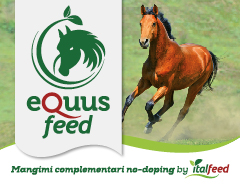2012 Arima Kinen (The Grand Prix) (G1) – Preview
It can’t be denied the 57th Arima Kinen (The Grand Prix) on Sunday will be lacking a little luster with top vote-getter Orfevre out of the race. Four others in the top 10 of the fan voting including 3-year-old Gentildonna - the filly’s Triple Crown champion who held off Orfevre to win the Japan Cup last month – have also decided to pass after last season’s race featured eight from the top 10, among them Buena Vista and Orfevrewho were one-two at the ballot boxes.
But the Arima Kinen is the Arima Kinen – the Japan Racing Association’s season finale which has arguably the highest turnover for any single race in the world alongside the Grand National – and will draw another stellar group of horses from around the country includingRulership, the second leading vote-getter, and Kikuka Sho (Japanese St. Leger) and Satsuki Sho (Japanese 2000 Guineas) winner Gold Ship.
With a purse of 416 million yen, the Arima Kinen generated 37.8 billion yen in 2011 and at its all-time high 16 years ago, it raked in more than 87.5 billion yen. It is a national event in Japan that reaches outside the usual fan base to the general public, much like the Grand National does in Britain, the Kentucky Derby in the United States, the Prix de l’Arc de Triomphe in France and the Melbourne Cup in Australia.
The Arima Kinen was originally known as the Nakayama Grand Prix, founded in 1956 at the behest of then JRA president Yoriyasu Arima. Arima felt compelled to organize a race at Nakayama that could match the Tokyo Yushun (Japanese Derby) at Fuchu in terms of prestige and popularity. Arima also decided to let the fans pick the field, which back in the times was a novel concept.
The inaugural race was held at 2,600 meters and after Arima passed away the following January, it was renamed after the late president. The Arima Kinen has been held at the current distance of 2,500 meters since 1966, and began accepting foreign-bred entries from 1971. The race received international Grade 1 status in 2007, opening up the door to a maximum of six horses from overseas.
The Arima Kinen starts near the end of the back stretch, circling Nakayama’s inner oval clockwise for a lap and a half before hitting the final straight. The home stretch at Nakayama remains relatively short at 310 meters but rises hard over the last 200 meters, testing the power and stamina of the runners. Compared to the Sprinters Stakes or the Asahi Hai Futurity Stakes held on Nakayama’s outside course, the turns are tighter in the Arima Kinen, making positioning absolutely crucial during the trip.
The winner will receive 200 million yen, and the race record is 2 minutes, 29.5 seconds set by Zenno Rob Roy in 2004. The Arima Kinen is the 10th race on the card, with post time set at 3:25 p.m. The following are the early favorites among a full field of 16:
|

Beat Black
BEAT BLACK: The reigning spring Tenno Sho (Spring) champion isn’t about to be written off just yet. The 5-year-old son of Miscast, out of theBrian’s Time dam Alarm Call, lifted the Emperor’s Cup as the 14th choice in April yet hasn’t won in his three following starts, including the Nov. 25 Japan Cup in which he finished seventh. Trainer Hitoshi Nakamura, however, is convinced his horse will have an opportunity in the Arima Kinen. Beat Black did win the Tenno Sho by four lengths which is no easy feat, and the shorter homestretch at Nakayama should work to his favor as a pacesetter. “I think we have every chance in the world,” Nakamura said. “If the turf holds up and we draw an inside barrier, if a few pieces fall into place, he has the talent to win.” After finishing ninth in the Takarazuka Kinen in June, Beat Black was originally set to return in the Kyoto Daishoten in October but a stone bruise pushed that plan back to the Copa Republica Argentina on Nov. 4, which, Nakamura said, “turned out to be a blessing in disguise.” “We had just two weeks after the Copa Republica Argentina and that ended up working to his favor,” Nakamura said. “He went into the Japan Cup really sharp and we think he’s been able to sustain that form, and make one last push for the Arima Kinen. We went over every aspect of the course. We worked backwards from the post and figured out when and where to make our move to give ourselves the best shot of winning this race.”
|
|

Dark Shadow
DARK SHADOW: The 5-year-old Dark Shadow is on the cusp of winning his maiden Grade 1 title, having finished fourth only 0.4 seconds off the pace in both the Tenno Sho (Autumn) and the Japan Cup. The Noriyuki Hori-trained horse has a reputation as a Tokyo specialist with all five of his wins produced at Fuchu but he has been runner-up at the right-handed Sapporo, Kyoto and Hanshin so Nakayama should not be a disadvantage by any means. With a weakened field compared to recent years, the Dance in the Dark son should have every opportunity of winning his elusive Grade 1 title. “He’s only won at Tokyo before so it would be a stretch for us to say Nakayama is a plus,” assistant trainer Atsunori Hashimoto said. “But he’s no longer just a stretch runner like he used to be. His racing style is a lot more flexible now. He’s been training just like always after the Japan Cup. Normal is good for him; I don’t sense a whole lot of fatigue from him.”
|
|

Eishin Flash
EISHIN FLASH: The 2010 Tokyo Yushun champion won the Tenno Sho (Autumn) in October for his first victory since winning the Japanese Derby, flying through the last three furlongs in 33.1 seconds under Mirco Demuro. Eishin Flash finished ninth in the Japan Cup under Christophe Lemaire after failing to settle early in the trip, but trainer Hideaki Fujiwara’s horse took second to Orfevre in the Arima Kinen last year and will be reunited with Demuro for this weekend’s race. There’s no denying the talent of the King’s Best son, and Fujiwara is counting on the Italian rider to get the most out of him once again. “He’s strong enough to control the horse,” Fujiwara said of Demuro. “He’s got the core strength to sit tight in the saddle which helps him stay in control and hence save what he needs to save for the end. Like in the Tenno Sho, they really hit it off from the workouts. He’s just a tremendous jockey, really.”
|
|

Gold Ship
GOLD SHIP: Gold Ship won the 3,000-meter Kikuka Sho on Oct. 21 in a cool 3 minutes, 2.9 seconds to capture a double in the Triple Crown, improving his record to six wins and two second-place finishes in nine starts. The only time he missed the podium was in the Japanese Derby when he was fifth, but was just 0.2 seconds behind winner Deep Brillante. By Stay Gold out of Point Flag by Mejiro McQueen, Gold Ship could even be the favorite on the day of the race, given the two-kg handicap he will receive as a 3-year-old. “Needless to say it won’t be easy, but I’m looking forward to seeing how he does here,” Gold Ship‘s jockey Hiroyuki Uchida said. “It will be good for him to race against the best horses in the country.” Trainer Naosuke Sugai managed to fight off the temptations of the Japan Cup, the richest race in the nation, and farmed out his colt after the Kikuka Sho, a decision that proved to be wise. Gold Ship returned to the stable with his battery recharged and is raring to go for the big year-ender. “Watching the race, I was on the edge of my seat,” Sugai said, looking back on the Kikuka Sho in whichGold Ship went from last to first to win the marathon at Kyoto. “But obviously, Uchida had to have been very confident to ride the race he did. Winning the Arima Kinen will be anything but a chore but I’m really hoping for the best. We’ve got a bit of pride on the line as winner of two of the Triple Crown races. There will be a lot of attention on us and I do feel obligated to perform here. This race is the wrap to the whole year, and we’ve got a lot of fans behind us. We owe it to them to do well. I’ve said this all long but Gold Ship races as if he were playing tag; he really seems to enjoy racing.”
|
|

Lelouch
LELOUCH: The 4-year-old, Kazuo Fujisawa-trained colt won his first graded race with victory by a length and a half in the Copa Republica Argentina last month. Afterward, jockey Norihiro Yokoyama was gushing about Lelouch and the future that awaits the son of Zenno Rob Roy, the 2004 winner of the Arima Kinen. Lelouch only has 11 starts under his belt, after spending practically all of last season going through growing pains. Despite his relatively slow rate of maturity, Fujisawa never tried to rush the horse back and the trainer’s patience is finally starting to pay off. “Up until now, it used to really take a lot out of him after a race or a hard workout,” Fujisawa said. “But he’s finally started to fill out and can take the physical beating now. In the Copa Republica Argentina, we were racing against horses who couldn’t make the grade for the Japan Cup, but he still ran a pretty strong race. To have a chance in a Grade 1 race, you have to be able to take it to a higher level. Experience is truly important. The older you get, the more efficient you become and you recover a lot of faster. He’s coming into his own as a racehorse.”
|
|

Nakayama Knight
NAKAYAMA KNIGHT: Nakayama Knight has lived up to his name as a warrior at Nakayama Racecourse, with three wins and having placed twice at the Chiba Prefecture racetrack. The 4-year-old colt trained by Yoshitaka Ninomiya was ninth in the Tenno Sho (Autumn) but is almost certain to rebound in the Arima Kinen after comfortably winning the Grade 2 Sankei Sho All Comers over 11 furlongs at Nakayama in September. Nakayama Knight will have plenty left in the tank as the Arima Kinen will be only his third start of the fall, and the first since the Tenno Sho. “He’s really matured physically this year,” jockey Yoshitomi Shibata said. “He’s also become tougher mentally, which has allowed him to settle during races. Before, I would always worry about whether he could stay relaxed or not but he’s really learned to loosen up. I think the experience he had in France last year is helping him.” While his track record at Nakayama speaks for itself, Shibata is convinced his horse is anything but a specialist there, and that he has the ability to perform regardless of location. Still, it doesn’t hurt to know he runs a tricky course well where the other big guns could trip up. “I had a good impression of him at Tokyo because he won the (Kyodo News Service Hai) here, but he didn’t quite accelerate the way I thought he would on the straight,” Shibata said. “He was in really good condition but the race didn’t unfold to his liking. There wasn’t a whole lot we could have done. I don’t think Nakayama isn’t the only course for him; I think he can handle any racetrack. The way he’s been lately, he can make his move at any point in the race. The 2,500 meters at Nakayama can be a bit difficult but he should be able to handle it without a hitch.”
|
|

Rulership
RULERSHIP: Though he won his first career Grade 1 title in Hong Kong in April with victory in the Queen Elizabeth II Cup, Rulership has come close but has yet to capture a top-level race at home. With Orfevre out of the mix, the Arima Kinen, though, could finally be the time forRulership who came in second, third and third in the Takarazuka Kinen, Tenno Sho (Autumn) and the Japan Cup, respectively, this season. “I’m constantly reminded of the huge support he has from the fans, and the number of votes he has won is just another example,” said Dubai World Cup-winning trainer Katsuhiko Sumii, whose 5-year-old trailed only Orfevre in the fan voting. “I can’t thank those people enough and I really hope we come through here for them.” With championship blood running through his veins, the King Kamehameha-sired Rulership, out of the Tony Bin dam Air Groove, has been slow off the blocks in all of his last three races, leaving observers to wonder what if he had gotten off to a decent start in any of them. For all his quality, Sumii realizes Rulership must break properly if he is to have a chance in the Arima Kinen, especially with the short homestretch at Nakayama where he’ll have little to make up ground unlike Hanshin and Tokyo. “We’ve got to work on his starts,” Sumii said. “He has what it takes but it’s not leading to results because of the way he starts a race. Hopefully, we can come up with a plan. His physical condition isn’t an issue. He always races three times before a break, and he should shape up fine for this weekend. Having a moment in the race isn’t good enough; you have to win. I’d really like to end the season with a win. We owe it to the Japanese breeding industry to give him a title before he goes to stud.”
|
|













